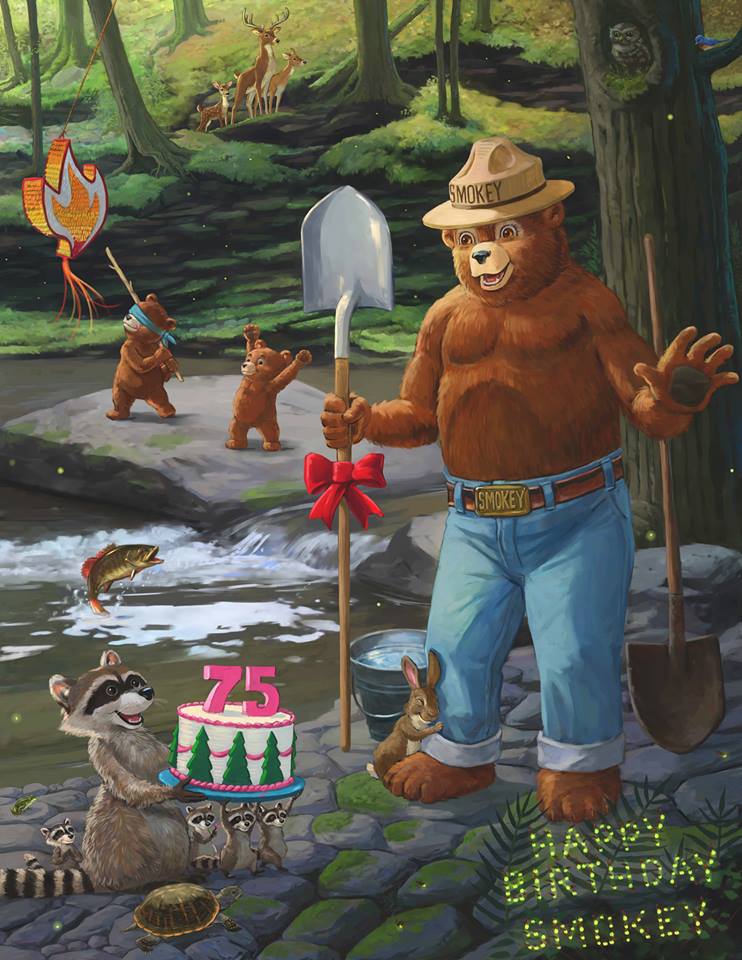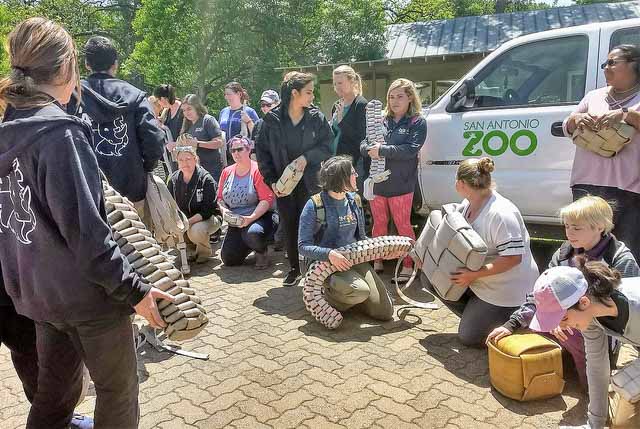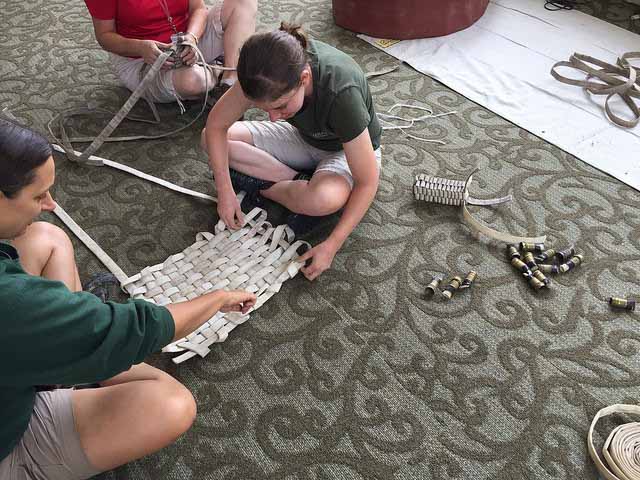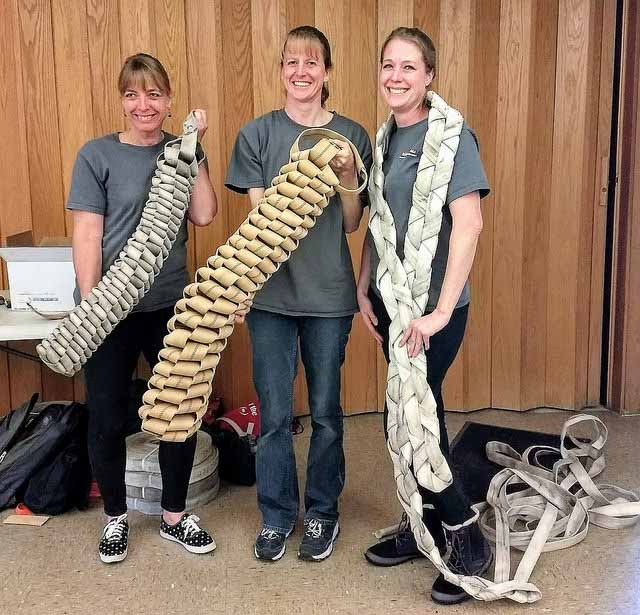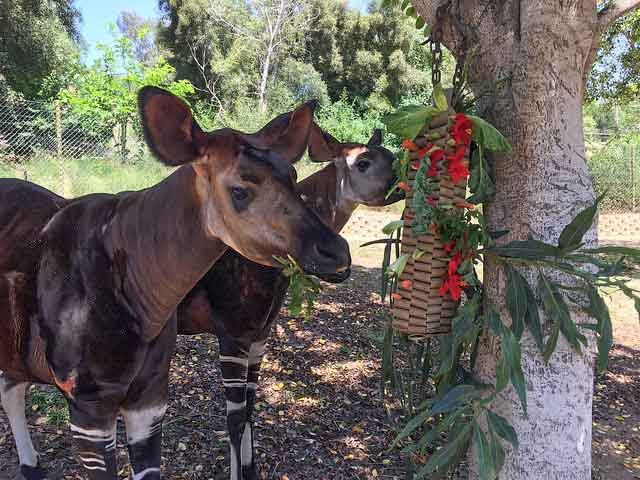We might be jumping the gun a little, but you need to know that Smokey Bear turns 75 this year. His birthday is usually celebrated on August 9, but there will be additional festivities this year — because 75 is evenly divisible by 25 and is three-quarters of the way toward 100.
Author: Bill Gabbert
System developed to shut off electricity to broken power line before it hits the ground
It can be done in less than 1.37 seconds
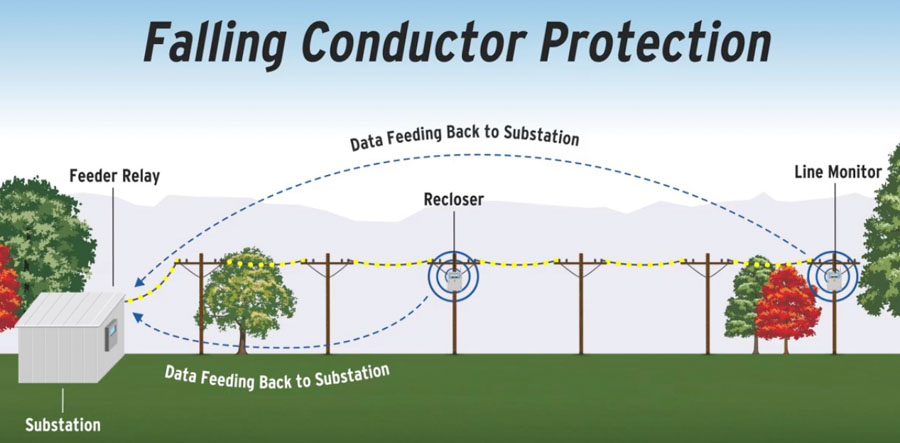
Some of the wildfires that have destroyed thousands of homes in California in the last two years were caused by broken power lines. A utility that supplies electricity to much of Southern California, San Diego Gas and Electric, has developed a system intended to cut off power to a falling power line before it hits the ground, therefore avoiding a possible ignition.
SDG&E’s research found that it takes 1.37 seconds for a broken conductor to hit the ground, for example, if a tree falls into the line or a vehicle hits a power pole. When the line contacts the ground sparks can ignite vegetation. The system is designed to detect a break and shut off the power before the clock hits 1.37 seconds — hopefully, avoiding what could become a dangerous wildfire.
In SDG&E’s video below, they describe the system beginning at 1:40.
If this actually is effective in the real world, it would be a very important method of preventing some wildfires caused by power lines.
Worker clearing road in Butte Fire scar killed by rolling log

A Calaveras County employee working on a brush clearing project along a road in the scar from the Butte Fire was killed Monday March 18 by a rolling tree or log. County Public Works personnel were working with a CAL FIRE Conservation Camp crew inside the perimeter of the fire that burned 71,000 acres south of Jackson, California in September, 2015.
Kevin Raggio, Calaveras County Coroner, identified the man as 57-year-old Ansel John Bowman.
A very brief “Blue Sheet”preliminary report released by CAL FIRE said the county employee “was hit by a previously downed tree and suffered fatal injuries”. He was pronounced dead at the scene.
The Butte Fire destroyed 233 residences and 175 outbuildings, and may have caused the deaths of two civilians.
Warm, dry weather increases wildfire activity in western Washington and Oregon
A fire southeast of Salem prompted evacuat.ion orders Tuesday
Numerous wildfires have broken out recently in western Washington and northwest Oregon after several days of warm, dry, and windy weather.
“That’s a result of very strong dry eastern winds that have been pushing across the cascade mountain range and through the Columbia Gorge,” Northwest Coordination Center fire weather program manager John Saltenberger told KGW8 news.
A fire southeast of Salem, Oregon near Lyons jumped the Santiam River and prompted evacuation orders on Tuesday, which were lifted Wednesday. Reported Tuesday afternoon near the North Santiam State Recreation Area off Highway 22, it was mapped at 189 acres after firefighters stopped the spread. By Thursday morning they had a fire line around 80 percent of the perimeter.
A three-alarm vegetation fire south of Seattle in White Center started in a vacant lot Wednesday afternoon. Burning embers landed on the roof of an apartment building and set it ablaze, damaging all seven units in the structure.
The King County Sheriff’s Office reported that a 34-year old man was arrested, suspected of setting the fire.
Brush and apt fire 10700 blk 14 Ave SW.
No injuries reported.
Fire is 3 alarms due to size and warm conditions pic.twitter.com/qPa9YYazne— Puget Sound Fire (@PugetSoundFire) March 20, 2019
No residents were injured but two firefighters were transported to a hospital with injuries that were not considered life-threatening.
TDN.com reported that the Washington DNR responded to eight wildfires in its seven-county Southwest Region on Wednesday — three in Cowlitz, two in Lewis, two in Clark and one in Wahkiakum. All of the personnel from Cowlitz 2 Fire & Rescue, were out on fires Wednesday.
Below is an excerpt from TDN.com:
About 40 firefighters and three state helicopters Wednesday fought a wildfire east of Cathlamet that was estimated Tuesday at 40 acres but had grown to 100 acres Wednesday. DNR Spokeswoman Mary McDonald said late Wednesday afternoon it is considered contained.
The fire, which broke out Tuesday and was spread by brisk gusts, burned up a steep slope on the north side of State Route 4 in the Little Cape Horn area. The highway remained opened, said Russ Truman, fire dispatch and prevention officer for the State Department of Natural Resources regional office in Castle Rock.
McDonald said a DNR helicopter was rerouted from the wildfire near Cathlamet to Tower Road after reports the brush fire had reached a structure there. Further details were not available.
“We are tapped,” [ Cowlitz 2 Fire Chief Dave] LaFave said. “Our people are worn out. This is a record. I’ve been in this department 36 years, and I’ve never seen this. People need to stop burning. … There can’t be anything so pressing that (burning) needs to happen right now.”
Russ Truman, fire dispatch and prevention officer for the State Department of Natural Resources regional office in Castle Rock said “Things are burning like they do in September.”
Eatonville (referenced in the tweet below) is about 50 miles south of Seattle.
#BREAKING– Firefighters are working on scene of a large brush fire at S.R 702 and Jackson Road in #Eatonville. Firefighters urge residents on Jackson Road to evacuate as this fire continues to grow. #wawildfire ? @komonews @KING5Seattle @KIRO7Seattle @Q13FOX pic.twitter.com/FUI8kZnZQT
— Pierce County Firefighters (@IAFF726) March 20, 2019
Thanks and a tip of the hat go out to Stanley. Typos or errors, report them HERE.
50 wildfires in WA this week w/ 49 on the west side. Our meteorologist says weather conditions paired w/ abundant dead/dormant grasses/shrubs allowed for a “perfect storm” to bring considerable fire activity over the last few days. ? Be #WaWILDFIRE aware! https://t.co/tpvqWey9G3
— Washington State DNR Wildfire (@waDNR_fire) March 21, 2019
Turn fire hose into animal enrichment items
The U.S. Forest is cooperating with with Hose2Habitat to repurpose retired fire hose into items that can improve the physical and psychological well-being of wild animals in human care. Fire hose can be used to make toys, browser racks for food, feeders, hammocks, cargo nets, and mats.
Hose2Habitat is a non-profit organization that helps to coordinate events for volunteers where they take a pile of old fire hose and make items that can enrich the lives of animals in zoos.
The tweet below has a link to photos at Flickr, some of which we used here.
Our partners @Hose2Habitat help us meet sustainability goals by turning retired fire hose into animal enrichment items. At a recent workshop in San Diego volunteers constructed animal browsers from fire hose, that was once used to fight wild fires. https://t.co/nSpsPisAaq
— USFS Fire-California (@R5_Fire_News) March 20, 2019
The last two photos are from the Hose2Habitat website.
Researchers compare smoke emissions from prescribed and wild fires

Four researchers, in a study funded by the U.S. Forest Service, evaluated data collected in 25 previous studies to compare exposure to particulate matter (PM2.5) created by prescribed fires and wildfires. The authors were Kathleen Navarro, Don Schweizer, John Balmes, and Ricardo Cisneros. Titled, A Review of Community Smoke Exposure from Wildfire Compared to Prescribed Fire in the United States, it is published under Open Access guidelines.
Below are excerpts from the study — the abstract and conclusions. And, information about a March 21 webinar featuring Ms. Navarro about the health effects of vegetation smoke.
Abstract
Prescribed fire, intentionally ignited low-intensity fires, and managed wildfires — wildfires that are allowed to burn for land management benefit-could be used as a land management tool to create forests that are resilient to wildland fire. This could lead to fewer large catastrophic wildfires in the future. However, we must consider the public health impacts of the smoke that is emitted from wildland and prescribed fire.
The objective of this synthesis is to examine the differences in ambient community-level exposures to particulate matter (PM2.5) from smoke in the United States in relation to two smoke exposure scenarios-wildfire fire and prescribed fire. A systematic search was conducted to identify scientific papers to be included in this review. TheWeb of Science Core Collection and PubMed, for scientific papers, and Google Scholar were used to identify any grey literature or reports to be included in this review. Sixteen studies that examined particulate matter exposure from smoke were identified for this synthesis — nine wildland fire studies and seven prescribed fire studies. PM2.5 concentrations from wildfire smoke were found to be significantly lower than reported PM2.5 concentrations from prescribed fire smoke.
Wildfire studies focused on assessing air quality impacts to communities that were nearby fires and urban centers that were far from wildfires. However, the prescribed fire studies used air monitoring methods that focused on characterizing exposures and emissions directly from, and next to, the burns.
This review highlights a need for a better understanding of wildfire smoke impact over the landscape. It is essential for properly assessing population exposure to smoke from different fire types.
Conclusions
Destructive wildfires have higher rates of biomass consumption and have greater potential to expose more people to smoke than prescribed fires. Naturally ignited fires that are allowed to self-regulate can provide the best scenario for ecosystem health and long-term air quality. Generally, prescribed fire smoke is much more localized, and the smoke plumes tend to stay within the canopy, which absorbs some of the pollutants, reducing smoke exposure. Land managers want to utilize prescribed fire as a land management tool to restore fire-adapted landscapes. Thus, additional work is needed to understand the differences in exposures and public health impacts of smoke of prescribedfire compared to wildfire. One way to do this would be for managers to collaborate with air quality departments (internal to agency or external) to monitor PM2.5 concentrations in communities near a prescribed fire.
Consistent monitoring strategies for all wildland fires, whether prescribed or naturally occurring, are needed to allow the most robust comparative analysis. Currently, prescribed fire monitoring is often focused on capturing the area of highest impact or characterizing fire emissions, while wildfire monitoring often relies on urban monitors supplemented by temporary monitoring of communities of concern. A better understanding of smoke impact over the landscape and related impacts is essential for properly assessing population exposure to smoke from different fire types.
(end of excerpt)
In a webinar March 21 at 11 a.m. CDT, Ms. Navarro will describe information from a different smoke study. She will present on a recent Joint Fire Science Program study estimating the lifetime risk of lung cancer and cardiovascular disease from exposure to particulate matter (PM) from smoke. This analysis combined measured PM exposures on wildfires, estimated wildland firefighter breathing rates, and an exposure disease relationship for PM to estimate mortality of lung cancer and cardiovascular disease mortality from lifetime exposure to PM.

